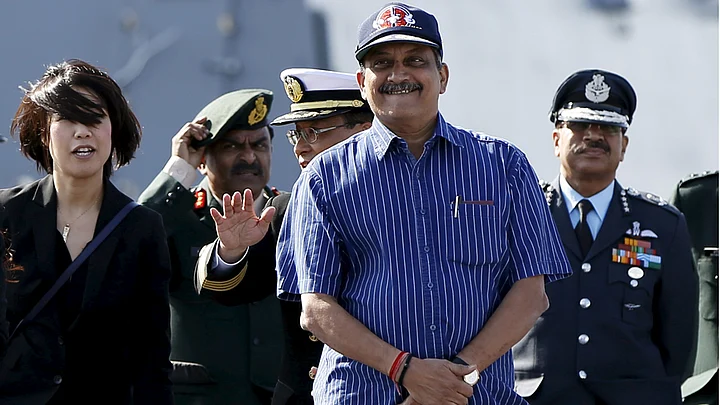Cut the red tape
- Committee reviewed defence procurement policies and procedures and recommended fresh guidelines
- Nominating selected Indian companies as ‘prime integrators’ of defence technology
- Indigenisation ratio of ‘Buy (Indian)’ acquisitions should be progressively increased
- So far, no technology has been transferred by US companies
On May 1, 2015, Defence Minister Manohar Parrikar appointed a 10-member committee headed by former Home Secretary Dhirendra Singh, to review the defence procurement policies and procedures and to recommend fresh guidelines with a view to giving an impetus to ‘Make in India’ and remove bottlenecks.
The committee has made several far reaching recommendations, including the nomination of selected Indian companies as strategic partners of the government to assume the role of ‘prime integrators’ of defence technology for complex projects at par with DPSUs and ordnance factories. The committee is also of the view that the indigenisation ratio of ‘Buy (Indian)’ acquisitions should be progressively increased with each revision in the defence procurement procedure (DPP).
The aim of indigenisation of defence manufacture should be to make India a design, development, manufacture, export and servicing hub for weapons and defence equipment by 2025. For over 50 years India had a buyer-seller, patron-client relationship with the USSR and then Russia. MiG aircraft, tanks and other major weapons platform were manufactured under license, but there was no transfer of technology (ToT). So far, no technology has been transferred by US companies either despite $10-12 billion worth of weapons acquisitions.
Research and Development
Research and development of defence technology must be carefully planned. It is the DRDO’s responsibility to conduct original R&D into strategic technologies, like ballistic missile defence, which no country will share with us. Hi-tech weapons platforms like fighter-bomber aircraft and sophisticated defence equipment like over-the-horizon (OTH) radars, should be developed jointly in conjunction with India’s strategic partners through joint venture (JV) companies. The design and development of low-tech items should be outsourced completely to the private sector.
At the policy level, many contentious issues need to be resolved, including the privatisation of most of the ordnance factories and the defence PSUs. Publicly owned manufacturing facilities are always inefficient and seldom meet the laid down production targets. They also lack dynamism and normally develop a risk averse professional culture.
Attracting More FDI
Though FDI in defence manufacture has been increased from 26 to 49 per cent, this is still not attractive enough for the MNCs to invest in India. They prefer to have a controlling stake. This policy should be reviewed by the government, but adequate regulatory measures should be built in to guard against the pitfalls of permitting majority stake.
The present offsets policy has not worked to India’s advantage. The defence industry’s ability to absorb 50 or even 30% offsets is limited at present. It may be more prudent to consider offsets only in cases where the benefits expected to accrue will outweigh the additional costs. While exports of defence equipment have been permitted, the procedures for according the approvals that are necessary and the regulatory framework need to be streamlined.
At present, the time frame for acquisition of defence equipment is excessive. The inconclusive negotiations for the Rafale fighter aircraft are an example. The present acquisition time must be cut down to less than one-third. The Defence Procurement Board should decide on a cut-off date for the conclusion of the acquisition contract and ensure accountability.
Defence Economic Zones
The government should examine the feasibility of establishing defence economic zones (DEZs) to provide incentives for indigenous defence manufacture. There is an inescapable need to establish an Institute of Defence Acquisition under the CoSC. The US has a Defence Acquisition University where all officers nominated for posts dealing with defence procurement are trained.
The DPP document is too long and must be cut down to not more than 12 to 15 pages. There is an urgent need to cut red tape, improve time-lines for the conclusion of contracts, ensure better quality control, involve armed forces officers more effectively at every stage of the acquisition and introduce greater transparency in the acquisition process.
As the full report of the Dhirendra Singh committee is not yet available in the public domain, it is not clear whether the panel has undertaken a holistic review of the entire gamut of defence procurement, including the DPP, the production process, R&D, the offsets policy, timely conclusion of contracts, quality control and accountability.
The committee’s recommendations must be widely debated before these are considered by the defence procurement. The procurement of defence equipment is an extremely important facet of preparedness for future conflict and must be streamlined to obtain maximum value from every rupee spent on the acquisition of weapons and equipment.
(The writer is former Director, Centre for Land Warfare Studies, CLAWS, New Delhi)
